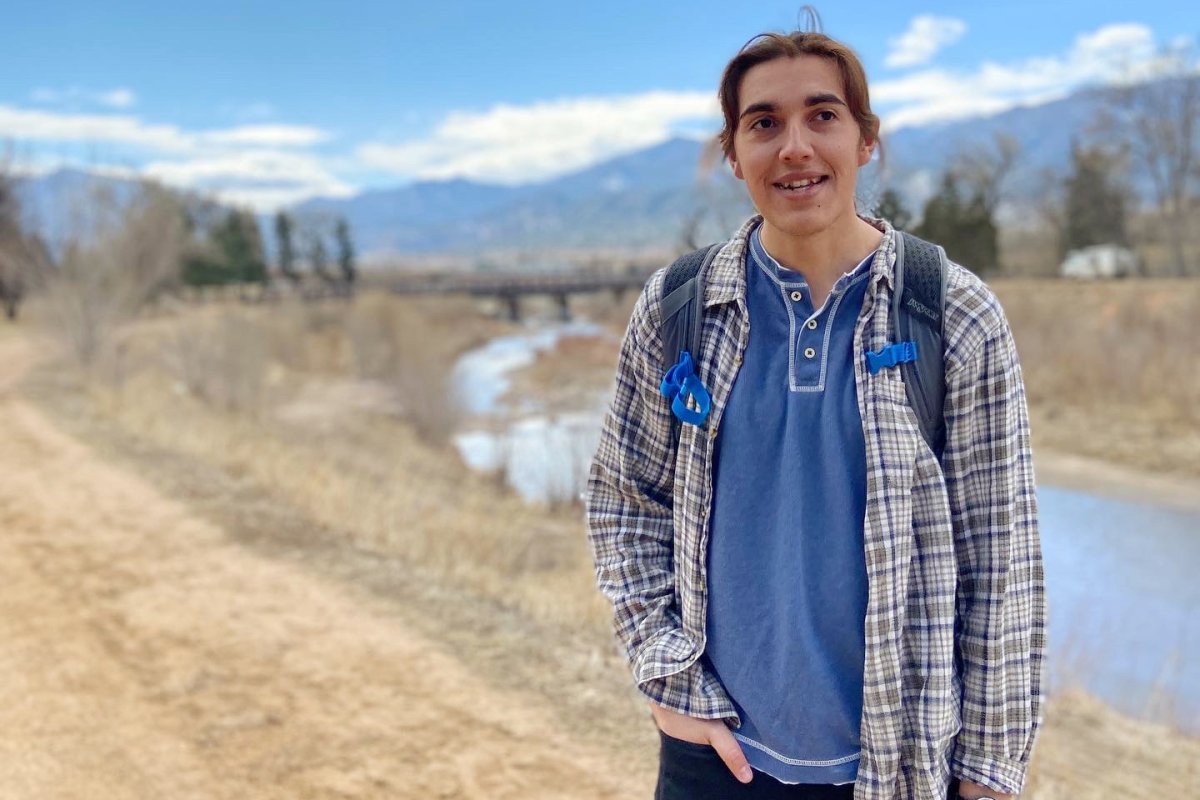Of land and heritage

Above: AISES president Pauly Soulia and a couple of friends restarted the student organization on the Twin Cities campus in 2019. Among the group's activities are K-12 outreach and mentoring.
Photos courtesy of Pauly Soulia.
CSE student restarts UMN American Indian Science and Engineering Society
December 22, 2020
For Pauly Soulia, life and land are interconnected. And those of us privileged to walk on this planet and breathe the air it provides have a right to keep it healthy for generations to come. His life’s vision is clear: “I want to help protect the land that we live on.”
The mechanical engineering junior, who enjoys hiking and canoeing in the northwoods of his home state of Minnesota, is looking at a future in which he can implement more efficient forms of renewable energy, eliminate plastic pollution in the ocean, and remove harmful aerosols in the atmosphere.
“As a child, I was interested in sustainability in the environment and I did well in STEM subjects,” Soulia explained. “My parents were pretty open about what I could study, but I knew that for the problems I was interested in solving, engineering was the way to go.”
Soulia’s decision to come to the University of Minnesota was “a happy coincidence” made easier with financial aid, including CSE’s Frederick McKinley Jones Scholarship. In addition to being close to family in the suburb of Roseville, the Twin Cities campus offered a good engineering school and sat squarely in one of the largest urban areas in the Midwest for indigenous people.
Nagi Ohitika is Soulia’s Dakota name. It means “strong spirit.” Soulia received it when he was 18, right after graduating high school. But ties to his native ancestry go back to sixth grade—when his mom found her birth mother in South Dakota on Lake Traverse Indian Reservation, which is home to the Sisseton Wahpeton Dakota people.

During regular visits to see his grandma and uncles, Soulia always left more intrigued about his heritage. It’s no wonder, today, he is so open about sharing his identity. In fact, he’s keen on using it to pave a way for others in his community to not just fit in, but thrive as well.
One way he’s doing that is through the UMN American Indian Science and Engineering Society (AISES). The chapter was established in 2014 but suffered from a lack of membership. Five years later, Soulia and a couple of peers decided it was time to jumpstart it as a means to connect with STEM professionals locally and nationwide, and as a way to bolster the University’s enrollment.
“There is a strong indigenous presence on campus because there are people who care enough to build community and preserve indigenous space for students on campus,” he said.
“But the indigenous population while I have been a student has always been less than one percent at CSE and the U," Soulia added, “which is kind of backwards because this entire campus is built on stolen Dakota land and we’re adjacent to a major city with indigenous people—and all these charter schools with indigenous kids ready for outreach.”
Visit days and tutoring sessions were part of the 2020 plan for AISES, under Soulia’s leadership. Then the pandemic hit.
“My hope is to offer them when we can,” he noted. “Right now, we’re all kind of in limbo. But it’s important to show kids what’s possible—that someone who looks like them can succeed in a STEM degree. I struggled with imposter syndrome when I first came to the U. I kept thinking: Do I even belong here? Can I do what everyone’s doing, like building robots? If I can feel this way as an inner-city kid from an upper-middle class family, I can only imagine someone from the reservation having the same feelings.”
This leads us back to Soulia’s life vision.
In his wish to protect our lands dwells a hope—he calls “lofty”—for all who live on it.
“Feeling included, or like you belong, is a basic human thing,” he said.
“The more we can empathize with that and do something about making things more equal or fair when we see injustice, the more we can help everyone understand that everyone—each one of us—deserves the same kind of treatment.”
Read more stories from our Winter 2021 college magazine.
By Pauline Oo
If you’d like to support students at the University of Minnesota College of Science and Engineering, visit our CSE Giving website.
